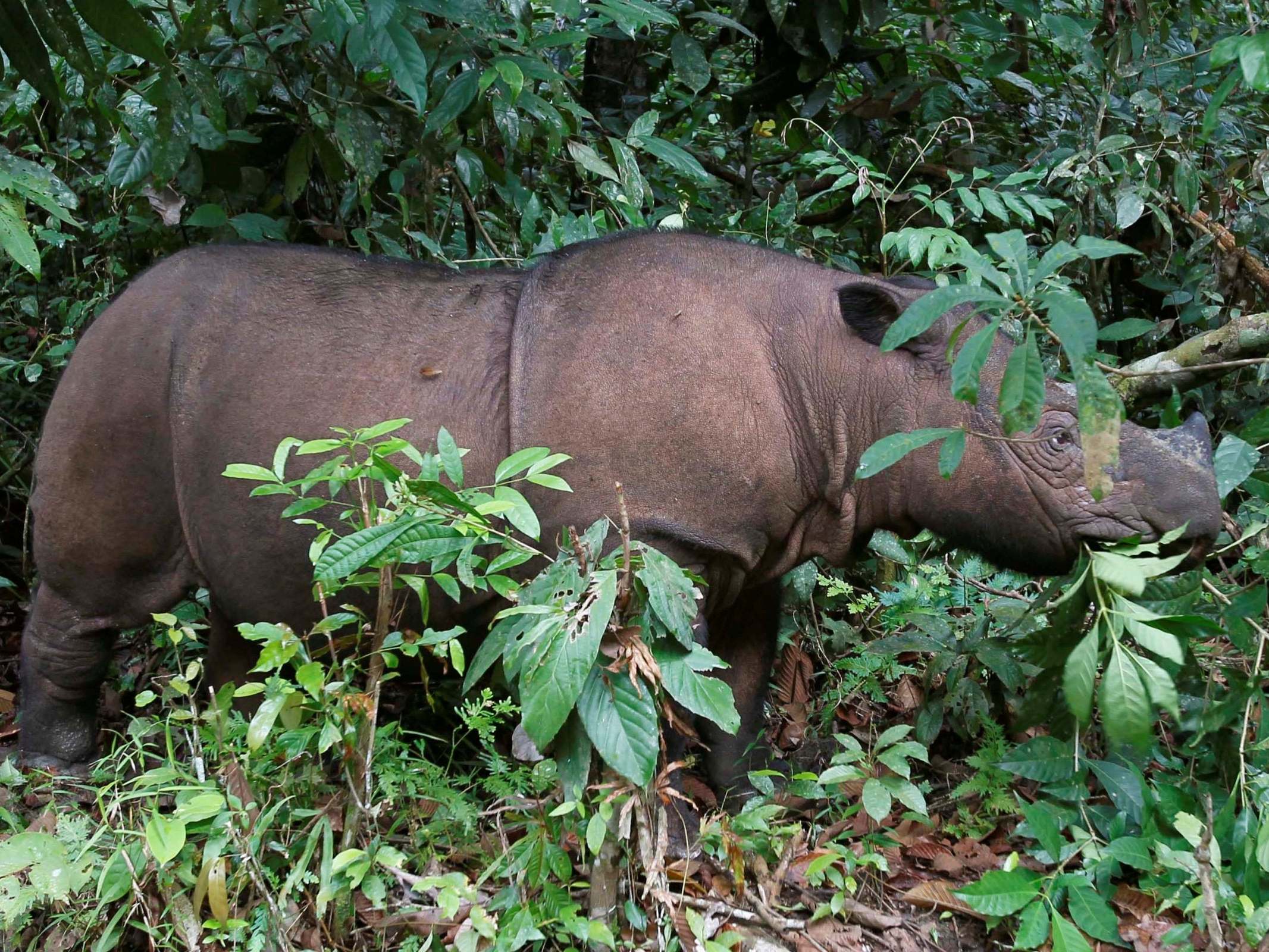Sumatran rhino becomes extinct in Malaysia after death of last female
There are now fewer than 100 members of the species living in fragmented habitats across the islands of Sumatra in Indonesia

The Sumatran rhinoceros – the world’s smallest rhino – has become extinct in Malaysia after the last surviving individual died in captivity, zoologists have said.
The Wildlife Department in eastern Sabah state on the island of Borneo said the rhino, named Iman, died of cancer on Saturday. She had uterine tumours since her capture in March 2014.
There are now estimated to be fewer than 100 Sumatran rhinos left in the wild, with some estimates suggesting numbers are as low as 30, as poaching and industrial-scale deforestation have destroyed the natural habitats they once roamed.
Department director Augustine Tuuga said in a statement that Iman, who was reportedly 25 years old, was suffering significant pain from growing pressure of the tumours to her bladder but her death had come sooner than expected.
Iman’s death comes just six months after the death of the country’s only male rhino, and another female rhino also died in captivity in Sabah state in 2017.
Wildlife Photographer of the Year 2019: The Winners
Show all 15Efforts to breed them have been futile but Sabah authorities have harvested their cells for possible reproduction.
“Despite us knowing that this would happen sooner rather than later, we are so very saddened by this news,” said Sabah’s deputy chief minister Christina Liew, who is also environment minister.
Ms Liew said Iman had escaped death several times over the past few years due to sudden massive blood loss, but that wildlife officials managed to nurse her back to health and obtained her egg cells for a possible collaboration with Indonesia to reproduce the critically endangered species through artificial insemination.
The Sumatran rhino, the smallest of five rhinoceros species, once roamed across Asia as far as India, but its numbers have shrunk drastically due to poaching and deforestation which have left populations isolated.
The WWF conservation group estimates that there are now only about 80 left, mostly living in the wild in Sumatra and Borneo in Indonesia.
The Sumatran rhino recently appeared in the BBC series Seven Worlds One Planet, narrated by Sir David Attenborough, drawing attention to their plight as demand for cheap palm oil has grown and seen vast areas of rainforest in Indonesia and Malaysia cleared for palm plantations.
The International Union for the Conservation of Nature (IUCN) identifies the Sumatran as well as the Black and Javan rhinoceros as being critically endangered.
Both African and Sumatran rhinoceros have two horns, while the other species have a single horn.
Only about 24,500 rhinos survive in the wild with another 1,250 in captivity worldwide, the IUCN says. Of these, more than two-thirds are white rhinos.
Rhinos are killed for their horns, which are made of keratin, similar to human hair and nails, and are highly sought after for use in traditional medicines in parts of Asia.
In the past 50 years wildlife across the globe has declined by 60 per cent. The rapid rate of extinctions has not been seen since the demise of the dinosaurs.
Additional reporting by AP
Subscribe to Independent Premium to bookmark this article
Want to bookmark your favourite articles and stories to read or reference later? Start your Independent Premium subscription today.

Join our commenting forum
Join thought-provoking conversations, follow other Independent readers and see their replies